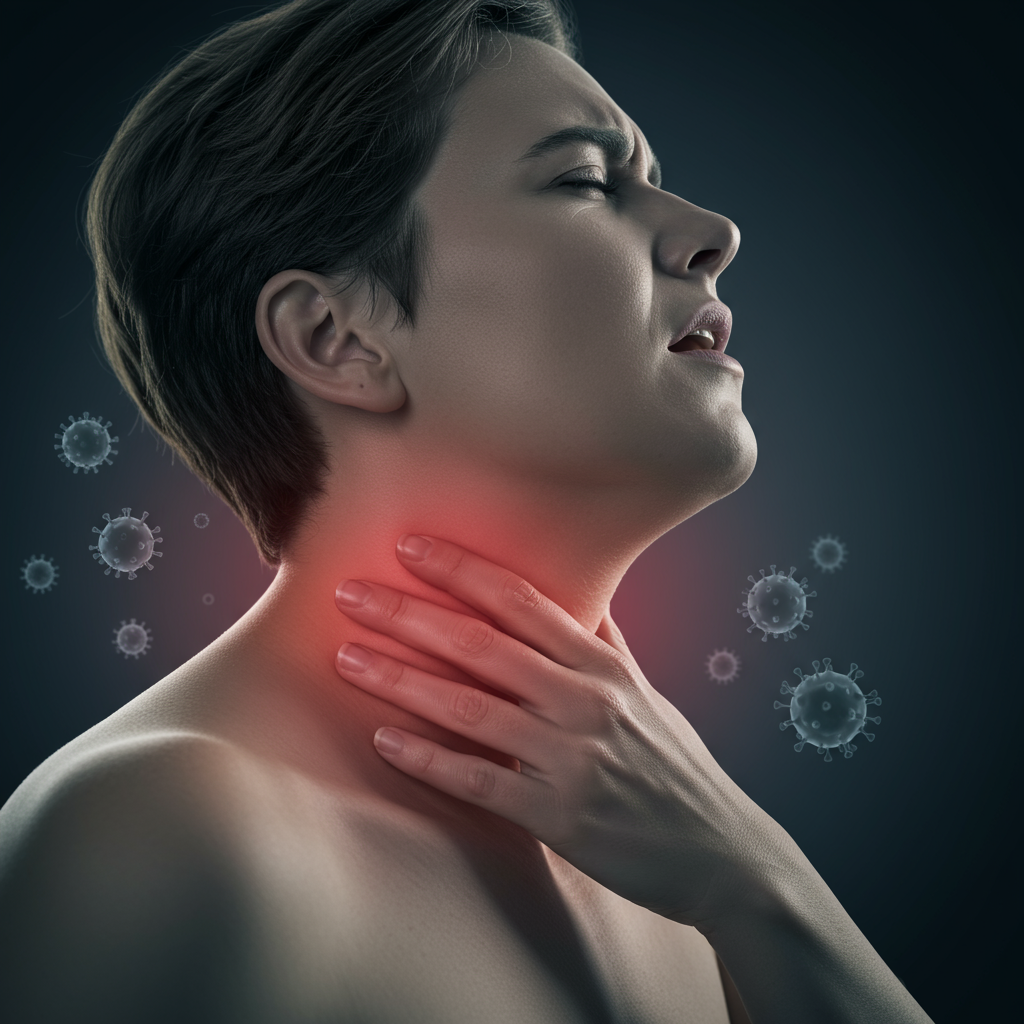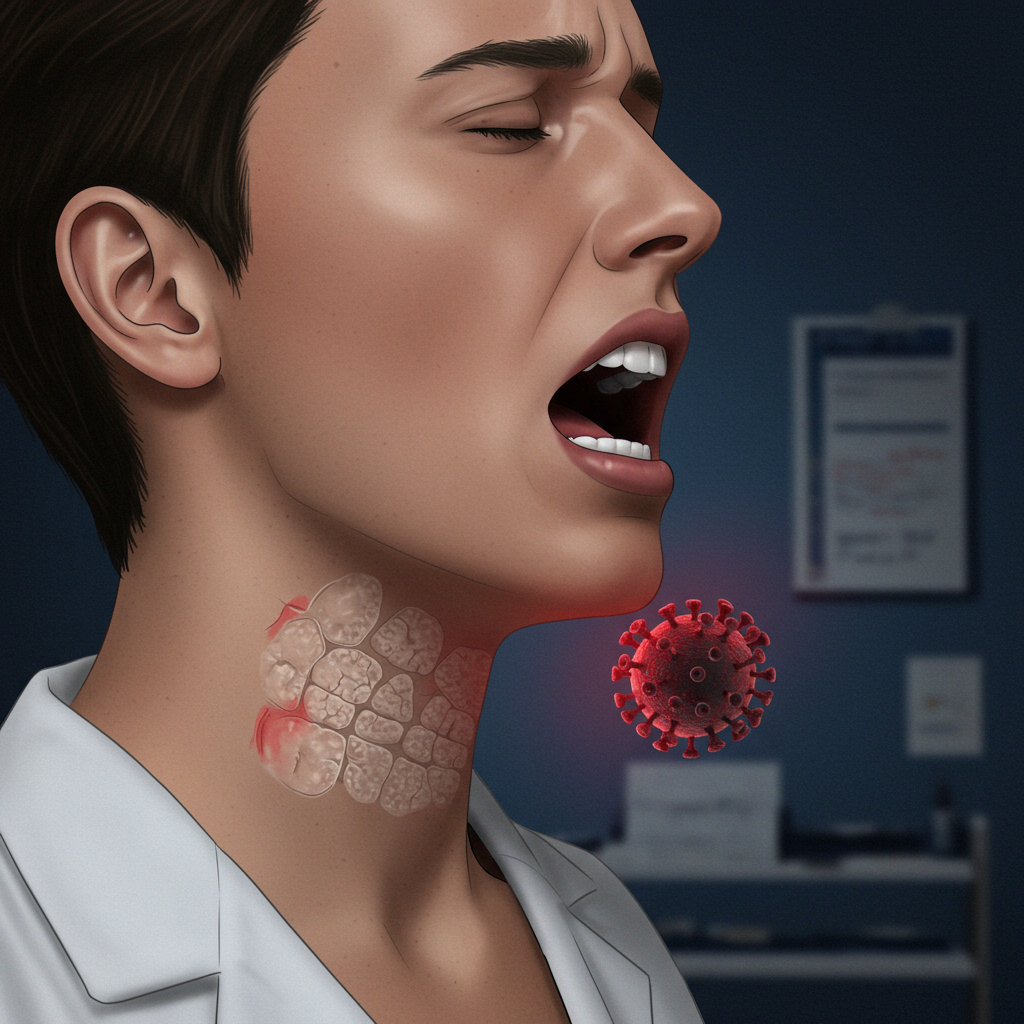Is covid-19 still circulating widely? Yes, new variants continue to emerge and spread, impacting communities across the nation and globally. While public focus may have shifted, the virus persists, bringing familiar symptoms alongside new concerns. Recently, one particular symptom – an intensely painful sore throat described by some as feeling like “razor blades” – has captured attention, prompting questions about its link to the latest versions of the virus.
Understanding the Latest COVID Variants and Their Spread
The landscape of COVID-19 is constantly changing as new variants arise. One variant that has recently become dominant in the United States is known as NB.1.8.1, informally nicknamed “nimbus.” This variant has been detected not only across the U.S. but also in California and numerous locations worldwide. Data from a two-week period ending in June indicated that NB.1.8.1 was estimated to account for 43% of cases nationwide, according to the Centers for Disease Control and Prevention (CDC), although the CDC noted that early estimates have lower precision.
Experts like UCSF infectious disease specialist Dr. Peter Chin-Hong describe the Nimbus variant as significantly more transmissible than many previous versions. This heightened ability to spread explains its rapid ascent to dominance. While the World Health Organization (WHO) and Dr. Chin-Hong have stated there is currently no evidence suggesting this variant causes more severe illness per individual infection, its high transmissibility means more people getting infected overall. An increase in total infections can inevitably lead to a rise in hospitalizations, particularly among individuals who are most vulnerable.
Tracking viral spread has evolved. While case counts were once the primary metric, wastewater monitoring has become a crucial tool. This method detects viral presence in sewage, which appears soon after infection. In some areas, like the Bay Area, wastewater data showed slowly increasing viral levels partly fueled by the NB.1.8.1 variant, although overall levels in June were lower than the previous year. Stanford’s WastewaterSCAN identified NB.1.8.1 as the most prevalent subvariant detected in U.S. wastewater in June, representing over 48% of variants at the San José site.
Vaccine Effectiveness Against Current Variants
Staying up-to-date with vaccination remains a critical layer of protection. The latest COVID-19 vaccine, rolled out in August 2024, is considered effective against the NB.1.8.1 variant. This is because Nimbus descends from the JN.1 lineage, which the current vaccine targets. Experts like Dr. Chin-Hong strongly recommend getting this vaccine, especially heading into periods of increased travel or potential seasonal surges, noting its protection typically lasts about a year. The CDC advises vaccination for most adults aged 18 and older, with costs usually covered by health insurance. Vanderbilt professor Dr. William Schaffner points out that COVID-19 often sees surges twice a year, in winter and late summer/early fall. He highlights a CDC recommendation for high-risk individuals (aged 65+, those with chronic conditions, pregnant people) to potentially receive two vaccinations annually—one in the fall and possibly another before the late summer/early fall increase—to provide extra protection and help prevent severe outcomes like hospitalization.
Investigating the “Razor Blade Throat” Symptom
The symptom causing recent concern and discussion across social media and news outlets is an extremely painful sore throat, vividly described by some patients as feeling like their throats are covered in razor blades. This intense discomfort is being frequently reported in individuals infected with the NB.1.8.1 variant.
However, medical experts offer important context regarding this symptom. While acknowledging that a very sore throat can occur with COVID-19 infection, they generally downplay the idea that “razor blade throat” is a new or uniquely frightening symptom tied specifically to the latest variants. Dr. Carrie Horn, Chief Medical Officer at National Jewish Health, notes that a very sore throat is not unique to current variants and has been a recognized COVID symptom for some time. Dr. Mark Burns, an infectious disease expert at UofL Health, states there isn’t one single standout symptom for COVID and that the intensity of a sore throat with the latest variants is “really no different” compared to previous ones.
Experts like Dr. William Schaffner explain that it’s common for questions about distinctive symptoms to arise with new variants, but often data shows these symptoms have occurred before. While the overall severity of current Omicron variants may be less compared to earlier strains like Delta, the types of symptoms tend to be similar. Dr. Chin-Hong suggests that a severe sore throat aligns with the pattern seen in Omicron descendants, which tend to affect the upper respiratory tract more than the lungs. A 2022 U.K. study found that a higher proportion (up to 70%) of Omicron patients reported sore throats compared to earlier variants, suggesting this symptom has been prominent for a while. Additionally, recent variants may be associated with a higher frequency of non-respiratory symptoms such as diarrhea, nausea, and vomiting, which could initially be mistaken for other illnesses. The CDC provides a general list of potential COVID-19 symptoms, which includes fever or chills, cough, shortness of breath, sore throat, congestion, new loss of taste or smell, fatigue, muscle aches, headache, nausea or vomiting, and diarrhea, noting that symptoms can vary depending on the variant and vaccination status.
Current COVID-19 Management and Testing Guidance
With COVID-19 continuing to circulate, knowing how to manage symptoms and get tested remains important. If you develop symptoms like a sore throat, fatigue, cough, or fever, getting tested for COVID-19 is advised. The incubation period for the virus has become shorter over time. For the NB.1.8.1 variant, a common timeframe between exposure and the onset of symptoms is around three days.
Expert advice for testing after exposure or symptom onset includes testing as early as two days after exposure if symptoms are present. However, a crucial point is that while symptoms may appear faster (as a primed immune system reacts quickly), it might take longer for the viral load to be high enough for a positive result on an at-home antigen test. Therefore, a negative result from an early antigen test, especially when symptoms are present, should not be fully trusted. It is strongly recommended to repeat the antigen test 48 hours later if symptoms persist. PCR tests are noted as being more sensitive alternatives. Always check the expiration date on test kits and ensure the control line appears to confirm the test is functional.
Finding COVID-19 tests has become less straightforward than during the height of the pandemic. The federal website offering free test deliveries by mail is no longer operational. Options for obtaining tests include purchasing at-home kits at pharmacies (which may be reimbursable by health insurance), finding free PCR testing sites through state resources (like using the “Free Sites” filter on California’s MyTurn.ca.gov), checking with local health centers, or scheduling tests directly through health insurance providers. Medicare typically covers PCR tests when ordered by a healthcare provider.
Managing Sore Throat and Other Symptoms
If you experience a severe sore throat with COVID-19, several strategies can help manage the pain. Dr. Chin-Hong suggests systemic treatments like ibuprofen (preferred over acetaminophen if medically appropriate) are generally more effective for intense pain than topical remedies. If swallowing pills is difficult, liquid forms might be easier. Topical relief can come from warm liquids like soup or tea with honey, cold items such as popsicles or ice cream, gargling with salt water, or using lozenges containing menthol or anesthetics. General environmental advice includes staying well-hydrated, getting plenty of rest, avoiding smoke, and using a humidifier to soothe irritated tissues. Medical attention should be sought for a sore throat lasting over a week, if it is very severe, or if you have difficulty eating or drinking. For individuals at high risk of severe illness who test positive, promptly contacting a doctor is important, as treatments are available.
Preventing Further Transmission
Basic public health measures remain essential in preventing the spread of COVID-19 and other respiratory viruses. Experts like Dr. Mark Burns recommend traditional measures including wearing masks in indoor spaces, maintaining social distancing, practicing frequent hand washing, and improving ventilation when possible. A critical step in protecting others is to isolate when you are sick. If isolation is not possible, wearing a tight-fitting mask is advised to minimize the risk of transmission.
Frequently Asked Questions
Is the ‘razor blade throat’ symptom unique to the new COVID variant?
Medical experts state that while a very painful sore throat is being frequently reported with the NB.1.8.1 (“nimbus”) variant, it is not a symptom unique to this specific variant or recent versions of the virus. Severe sore throats have been a recognized symptom of COVID-19 infection for some time, particularly with Omicron descendants affecting the upper respiratory tract. Experts emphasize that the intensity of this symptom is generally considered no different than what has been seen with previous variants, even though some individuals can experience it severely.
Where can I find reliable information or testing for the latest COVID variant?
Reliable information about COVID-19 variants and spread can be found from official sources like the CDC and state public health departments (e.g., California Department of Public Health). For testing, while free federal test delivery has ended, you can purchase at-home antigen tests at pharmacies (potentially reimbursable by insurance). Free PCR testing sites may be available through state resources like MyTurn.ca.gov in California. Additionally, local health centers and your health insurance provider (like Kaiser Permanente or Sutter Health mentioned in one source) can assist with scheduling tests, and Medicare typically covers provider-ordered PCR tests. Wastewater monitoring sites like Stanford’s WastewaterSCAN also provide data on variant prevalence.
Should I get vaccinated against the NB.1.8.1 ‘Nimbus’ variant?
Yes, the latest COVID-19 vaccine, updated in August 2024, is effective against the NB.1.8.1 variant, as it is based on the JN.1 lineage from which Nimbus originated. Experts recommend vaccination as a key preventive measure. The CDC advises vaccination for most adults aged 18 and older. High-risk individuals (such as those over 65, with chronic conditions, or pregnant) might be advised by the CDC to receive two vaccine doses annually—one in the fall and potentially another before a likely late summer/early fall increase—to maximize protection against severe illness and hospitalization. Consulting your healthcare provider for personalized vaccination recommendations is advisable.
COVID-19 remains a dynamic situation, with new variants like NB.1.8.1 continuing to emerge and spread. While symptoms can vary, including the widely discussed “razor blade throat,” experts confirm that such intense sore throats, while certainly uncomfortable, are not necessarily a new or unique indicator of recent variants compared to previous ones. Staying informed through reliable sources, utilizing effective testing strategies (including repeat testing with antigen kits if symptomatic), managing symptoms with recommended remedies, and maintaining basic prevention measures like vaccination and hygiene are key steps in navigating the ongoing presence of the virus and protecting both personal and public health.




